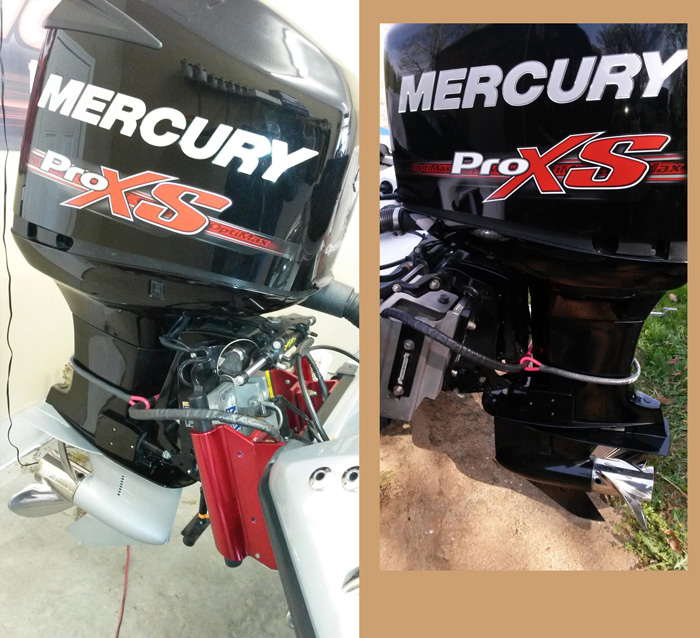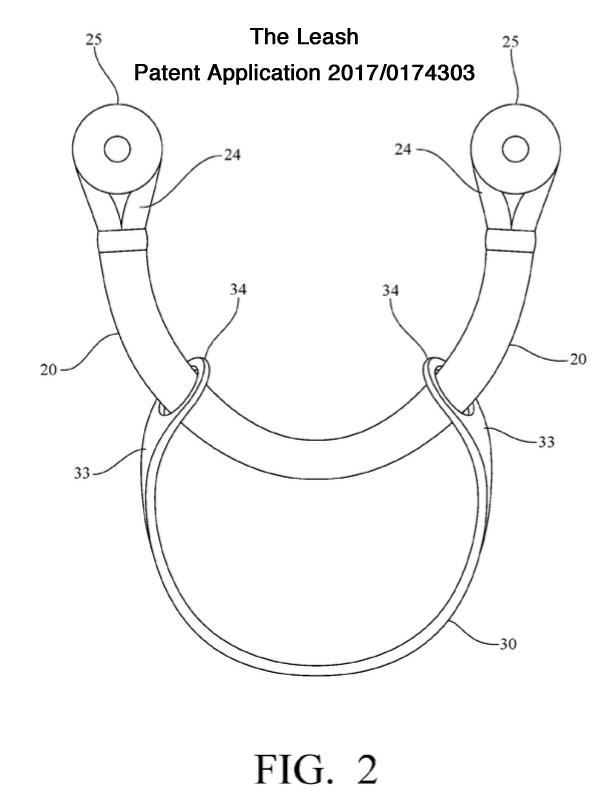The Leash patent application was published by USPTO
The Leash, a tether for large outboard motors, entered the market in early 2016. They especially focus on preventing bass boat outboard motors from entering the boat after striking a floating, submerged, or fixed object.
Their patent application was filed 22 December 2015 and published 18 months later on 22 June 2017 by the U.S. Patent Office as Publication Number US2017/0174303 A1.
Roy John Grohler of Kentucky is the inventor. The patent is assigned to The Leash Tether LLC. of Kentucky.
.The patent application does not cite out work in this area but does include a summary of some of our data, “A listing of motor flip accidents in July 2014 liss 63 motor flip accidents and reports 9 fatalities.”
They say the tether can be a chain cable or preferably multifilament high strength polymer fiber,
The preferred embodiment of “the tether is designed to prevent the motor flipping of a 750 pound outboard motor striking a submerged object at 70 miles per hour.”
The patent application notes an untethered motor will still be running when it enters the vessel.
One preferred embodiment of the invention uses a 1/2 to 3/4 inch rope core of multifilament yarn spun from liquid crystal polyester distributed under the tradename Vectran.
A 7/16 core illustrated in the patent has a tensile strength of 18,000 pounds.
The patent application also shows their use of spools on the free ends of the tether that are placed under the outboard mounting bolts.
As written, the patent application has 9 claims, two of which are independent claims (the other claims are based upon one or the other of those two claims).
The first claim (an independent claim) basically says the safety device prevents violent motor flipping when the drive section strikes a submerged object. It is composed of a high strength leash tether around the exhaust housing with free ends secured to the transom.
The seventh claim, the other independent claim, basically reads like the first claim, except the free ends of the tether have spools that are securely attached to the transom PLUS there is a secondary tether with rings formed on its free end that attach to the primary tether.
Our Comments on the Patent Application
We are thrilled to see The Leash enter the marketplace and wish them the best.
However, we suspect their patent application will face some problems.
The U.S. Patent and Trademark Office (USPTO) allows you to have three independent claims and a total of 20 claims in your patent for no additional charge. That is why the bulk of patents have 20 or close to 20 claims. The Leash patent application only has two independent claims and a total of 9 claims. They missed an opportunity to claim some more space or to more closely define an existing space in the multidimensional volume of space not yet claimed by other patents.
Their claim #7 seems to have missed an opportunity to have been split and then later built upon. For example, it currently includes the use of spools PLUS the use of a primary and a secondary tether. They could have written two independent claims one for that looked like if for the use of spools and the other that looked like it for the use of a primary and a secondary tether. Then the existing claims 8 and 9 could have been tied to both versions, plus other claims could have tied them together (two tethers plus spools).
As to the probability of the patent actually being issued in its current form, patent examiners tend to reject claims and make you fight to defend them.
In this instance, our previous work, and the work of others in this field makes me doubt that claim #1 the the dependent claims tied to it will survive.
On 26 December 2013 we published an update to our List of Ways to Prevent Outboard Motors From Entering Boats. Page 19 of the current version at the link to the left reads quite similar to what we posted in December 2013. We talk about forum discussions about “use a cable, chain or high strength strap / rope to tie the outboard to the transom to prevent it from flying into the boat.”
We noted some expert witnesses had spoken of tethers in the 2012 Laass case, and that some had discusses the use of tethers similar to tire tethers used by NASCAR. I went on to note they were made of Vectran.
We also noted South Carolina DNR was said to have been using tethers on its outboard patrol boats.
Since then, we found an early 1970’s Coast Guard article in which they encouraged bass boaters to tether their outboard motors to prevent them from flipping into the boat.
Many boaters have used cables and chains for this purpose though the years. Plus small outboard motors have regularly been tethered to transoms for many decades.
The information on our site plus the 1970’s Coast Guard article would likely be more than enough for an Examiner to scratch their first six claims.
Having most to all of your patent claims reject in the first review is commonplace with examiners. You have to defend you claims against their objections or re-write your claims to skirt around them.
The use of a primary tether combined with a secondary tether and with the use of spools is likely unique enough to stand once they or their attorney fights with the patent office for a while.
We hope the patent office cites our work (our collection of references on the use of tethers) however, if they do find them, they will most likely cite a few of the original references, not the collection of them.
Note we are certainly not saying the Leash stole our invention. It was not our invention, the basic idea has been around a long time, and was likely generated independently by several individuals. We just pulled several of the references together in modern times an presented it as a possible means of preventing outboard motors from continuing to enter bass boats. The leash built upon that body of work by introducing spools and the use of a primary plus a secondary tether to the application.

